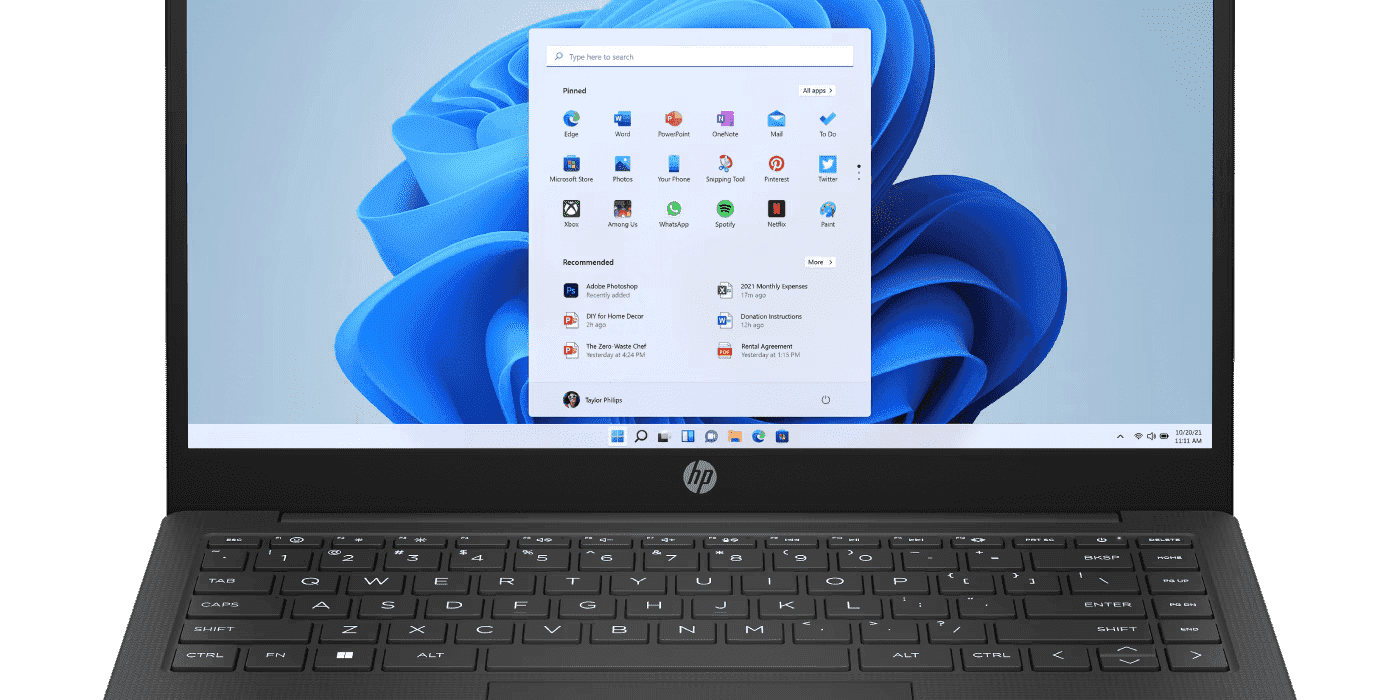Thank you for visiting the NEW ZEALAND HP Store
-
Contact Us
CONTACT USCall us
- Sales
- 0800 854 848
- Technical support
- +64 9884 8600
Mon-Fri 9.00am - 6.00pm
(exc. Public Holidays)
Chat with us- Our specialist are here to help
- Live chat
Mon-Fri 9.00am - 6.00pm
(exc. Public Holidays)
Submit feedback We value your opinion! - My Account
A Complete Guide to Intel Processors


For decades, Intel® has made the most trusted CPUs on the market, but the thicket of model numbers, names, and generations can make it challenging to choose the best Intel Core CPU for your PC.
Below, we explain the Intel processor brands, generations, and models in plain, easy-to-understand English. We’ll also look at naming conventions, so when you see Intel Core™ i3-8145U or Intel Core i7-10510Y, you’ll know exactly what each part of the name means.
We also demystify the Intel CPU generations and “Lake” monikers, and the latest Intel processors – 11th Generation – and how they support the new Evo platform (and why that’s exciting). Finally, we’ll clarify Intel’s Core, Xeon®, Pentium®, and Celeron® processors, with the generations, brand modifiers, and suffixes of each.
For a comprehensive list of all Intel processor model numbers, see the Intel product specs site.
What are Intel processors?
Intel processors are the most popular CPUs for desktops and laptops in the world. They’re offered in a range of model families, with names like Core, Xeon, Pentium, and Celeron. They come in multiple generations like 9th, 10th, and 11th, also called Coffee Lake, Comet/Ice Lake, and Rocket/Tiger Lake.
These household-word processors power most of the PCs on the market, with specific models engineered for enhanced speed, mobility, creative workflows, gaming performance, business news, big data, and other applications.
Intel processor naming conventions
To sift out the differences between the unique Intel CPUs, you have to know the parts of each name. Each processor name has a brand, brand modifier, generation, SKU, and product line. Once you know what each of those mean, you can identify each processor at a glance. Let’s take a look:
THE PARTS OF AN INTEL PROCESSOR NAME:
• Brand: The overall product line, such as Core, Xeon, Pentium, or Celeron.
• Brand modifier: In the Core brand of Intel chips (and only there), you’ll find a brand modifier such as i3, i5, i7, or i9 after the “Core” name. Higher modifier numbers generally mean better performance and more features. (The Xeon, Pentium, and Celeron brand names don’t have these modifiers.)
• Generation indicator: After the brand and modifier, you’ll find a generation indicator like 9, 10, or 11, closely followed by an SKU number sequence. This indicates when the chip was made. (9th Gen Intel chips came out in 2018-2019, 10th Gen in 2019-2020, and 11th Gen in 2020-2021.)
• SKU: This is a more specific model number within each brand and generation. Generally, a higher model number means a more full-featured processor. But you can’t compare model numbers from one brand to another, such as Core vs Xeon.
• Product line: The product line suffix at the end of each Intel processor name lets you know what each processor is generally meant for. For instance, the “XE” at the end of an Intel Core processor’s name denotes a max-performance desktop chip.
One note about these naming conventions: they’re not dyed in the wool. Only the Core brand has the modifiers, and the SKUs and product lines don’t follow any standardized code that’s easy to tease out from one brand to the next.
Intel processor generations
One of the stickiest parts of Intel processor names is the generations. The good news? It’s easy to grasp, once you see it explained. Techies often talk about 9th Gen, 10th Gen, and 11th Gen processors, and the different “Lake” processor families, like Whiskey, Ice, and Sky. But actually, “lakes,” “generations,” and “microarchitectures” are the same thing.
Each generation delivers significant performance upgrades, increasing productivity and connectivity, such as longer battery life, faster clock speeds at up to 5.3 GHz with Turbo Boost, Intel WiFi 6 (Gig+), Thunderbolt™ 3 technology, and immersive 4K HDR.
INTEL CORE PROCESSORS, RANKED BY GENERATION:
• 8th Generation, released 2017 to 2019; Coffee Lake, Kaby Lake, Whisky Lake
• 9th Generation, released 2018 to 2019; Coffee Lake Refresh (Desktop)
• 10th Generation, released 2019 to 2020; Comet Lake (Desktop), Ice Lake (Mobile)
• 11th Generation, released 2020 to 2021; Rocket Lake (Desktop, Comet Lake Refresh (Desktop), Tiger Lake (Mobile)
What’s the latest Intel processor?

As of early 2021, the latest Intel processor is the 11th Generation Tiger Lake chip for mobile PCs and the 10th Generation Comet Lake processor for desktops. The eagerly-awaited 11th Generation Rocket Lake PC processor from Intel will hit shelves sometime in early to mid 2021.
The 11th Generation of Intel chips is incredibly exciting, because it supports the new Evo platform. That’s not a chip, but a new from-the-ground-up redesign of PC hardware that wakes from sleep in less than 1 second, switches between apps and tabs in a blink, and supports remote workflows like no other machine in history.
1. Intel Core processors
Intel Core processors are Intel’s flagship family of CPUs. First released in 2006, they replaced the popular Pentium line as the standard for high-end processor chips. They’re available in different models like Core i3, i5, i7, i9, and X, and they bring a new generation to market every 1 to 2 years.
As a rule, 1) the higher the Core “i” number, the better the chip; and 2) the newer the generation, the better the chip. So an Intel Core I7 processor will give higher performance than an Intel Core i5 chip, and an 11th Generation Core i9 chip performs better (with more features) than a 10th Generation Core i9 chip.
INTEL CORE PROCESSORS, RANKED BY PERFORMANCE:
11TH GENERATION
• 2021 Rocket Lake; Core i9-11
• 2020 Comet Lake Refresh; Core i7-11, Core i5-11, Core i3-11
10TH GENERATION
• 2019 Comet Lake; Core i9-10
• 2019 Ice Lake; Core i7-10, Core i5-10, Core i3-10
9TH GENERATION
• 2018 Coffee Lake Refresh; Core i9-9, Core i7-9, Core i5-9, Core i3-9
Generally speaking, the higher you go in the table above, the “better” the processor. For instance, 11th Generation Core processors add new enhancements for connectivity, graphics, and AI, creating a much faster, easier-to-use platform with WiFi 6. They’re incredibly thin and do more with less electricity, letting manufacturers like HP create thinner, lighter, cooler, and more powerful laptops than ever before.
CORE SUFFIX MEANINGS:
• C: Desktop processor with high-end graphics
• F: High-performance processor used with discrete graphics cards (ex. Gaming)
• H: High-performance graphics
• K: Unlocked for overclocking
• M: Mobile
• Q: Quad-core
• R: Desktop processor, BGA1364 (mobile) package, high-end graphics
• S: Performance-optimized lifestyle
• T: Power-optimized for best desktop computing
• U: Ultra-low power for laptop efficiency
• X: Extreme unlocked for high desktop performance
• Y: Extreme low power
Popular PCs with Intel Core processors include the HP ENVY laptop with up to 8 cores and 16 threads or the showstopping HP 23.8 All-in-One PC, which has a 23.8-inch Full High Definition (FHD) touch display and sleek design. Intel Core chips are also a staple of gaming PCs like the HP OMEN 40L gaming desktop PC.
2. Intel Xeon processors
Intel Xeon processors are the brand’s line of business CPUs. They have comparable clock speeds to the Core family of processors. Where they shine is their support for ECC error-correcting memory, which is a must for critical computing applications, like financial or scientific computing.
Aside from the “Lake” generation names, Intel dubbed the 2019 model “2nd Generation Xeon,” and the 2020 models, “3rd generation Xeon.” This has nothing to do with the more broad chip generations like the 10th and 11th Generation. If you have an older machine with a Xeon CPU, don’t worry. The first Xeon processor actually came out in 1998, with new models released regularly since then.
INTEL XEON PROCESSOR GENERATIONS:
• Cooper Lake, 2020 to 2021; Xeon Gold, Xeon Platinum
• Comet Lake, 2020 to 2021; Xeon W
• Cascade lake, 2019 to 2020; Xeon Platinum, Xeon Gold, Xeon Silver, Xeon Bronze
• Coffee Lake, 2018 to 2019; Xeon E
XEON SUFFIX MEANINGS:
The different letter suffixes at the end of the Xeon processor names tell you a little about the chip’s features.
• E: Embedded
• H: Large memory support (up to 1.12 TB per socket)
• HL: Large memory support (up to 4.5 TB)
• L: Large memory support (up to 4.5 TB)
• M: Medium memory support (up to 2 TB)
• N: Networking specialized
• P: Performance and power
• R: Refresh (high performance)
• S: Search optimized
• T: Thermal / long life cycle / low power
• U: Uniprocessor
• V: Virtual machine density optimized
• Y: Speed select
Favorites among Intel Xeon-based machines, the HP ZBook workstations can take your design, video editing, and creativity to the next level with amazing power and vapor-cooled thermals.
3. Intel Pentium processors
Intel Pentium processors are mid-to-entry level CPUs that deliver high value at more modest price points than the Core and Xeon processor lines. These chips manage similar clock speeds to the more robust Core chips, keeping prices down by not including premium features like Turbo Boost and HyperThreading. That means if you’re not running processor-guzzling applications for big data or design, a Pentium processor can be an excellent choice.
INTEL PENTIUM PROCESSOR GENERATIONS:
Jasper Lake, 2021; Pentium Silver
Comet Lake, 2019 to 2020; Pentium Gold
Tiger Lake (Mobile), 2019 to 2020; Pentium Gold
Coffee Lake, 2018 to 2019; Pentium Gold
• H: High power
• U: Medium power
• T: Low power
4. Intel Celeron processors
Intel Celeron processors are a line of desktop and laptop CPUs based on the Pentium 4-core chip. They have less cache memory and reduced speeds, making them a much more affordable choice for those who stick to browser-based activities and non-processor-heavy applications.
The first Intel Celeron processor appeared in 1998, with new generations regularly since then. The newest Celeron processors are the Celeron N4500 and Celeron N5100, with clock speeds of 1.1 GHz and 1.8 GHz, and burst speeds of 2.8 GHz.
INTEL CELERON PROCESSOR GENERATIONS
Jasper Lake, 2021; Celeron N
Comet Lake, 2019 to 2020; Celeron G5
Tiger Lake (Mobile), 2019 to 2020; Celeron 6305
Coffee Lake, 2018 to 2019; Celeron G4
CELERON SUFFIX MEANINGS:
• E: Embedded
• J: Processor has NX (No-execute) feature
• L: Mobile low power
• S: Small form factor CPU
• P: Mobile power-optimized
• Q: Desktop or mobile quad-core
• T: Extended temperature range
• U: Mobile ultra-low power
• X: Desktop or mobile extreme power
Summary
Intel makes hundreds of different processor models, with more hitting the market each year. For a quick rundown:
1. Intel Core CPU is their flagship line of powerful chips for business and personal use.
2. The Intel Xeon line is specially designed for science and data-heavy workflows.
3. The Intel Pentium family of processors is a budget-friendly option that delivers a big bang for the middle-sized budget.
4. Intel Celeron serves up fast performance for entry-level shoppers with light-level workflows.
- Sales
- 0800 854 848
- Technical support
- +64 9884 8600
Mon-Fri 9.00am - 6.00pm
(exc. Public Holidays)
- Our specialist are here to help
- Live chat
Mon-Fri 9.00am - 6.00pm
(exc. Public Holidays)








